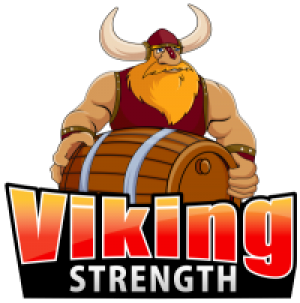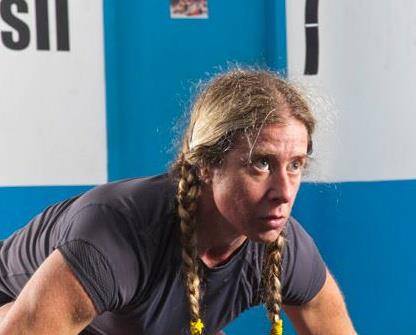Marilia Coutinho is a Sports Writer, University Professor, Speaker and Researcher. She is frequently hired to teach about strength training methods, kinesiological aspects, historical aspects and strength sports in general.
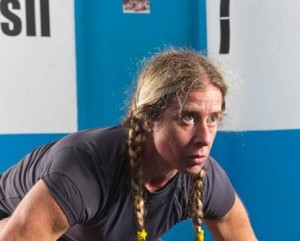
She also is a highly successful Brazilian Female Powerlifter.
She has published two books: one about powerlifting (“Back to basics: Powerlifting”) and the other about controversies in health and beauty (“Health and Esthetics: the thin line between health and beauty”).
In this article she is going to talk about:
- Techniques for Improving the Squat
- Injuries
- Controlling the Emotional State at Meets
- Female in a Man’s World – Powerlifting in Brazil
- Strength Sports in Brazil
- South American Powerlifting Federations
Who is Marilia Coutinho?
I have been a competitive powerlifter since 2006. Before that, I was a competitive athlete in other sports.
I was born and live in Sao Paulo, the largest city, the economic and cultural center in Brazil. It is not a pretty place. Like all big cities, it is crowded, polluted, dirty, and has terrible traffic problems.
Actually, unless you have to live here, I don’t recommend this city………
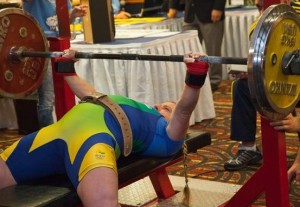
I am not sure that titles mean alot in powerlifting, considering the 40 plus federations we have in the sport. It is pretty easy to be a champion if you can choose, from a large number of meets, the one most favourable to you.
I have collected a number of State, National, South-American and World titles, by different federations (IPF, WABDL, GPC and, recently, GPA).
The ones I respect best, though, are my recent results at the South-American Raw Bench Press and Powerlifting Championships (ASUPO/GPA, Villa Maria, Argentina, October 2011) and World Raw Bench Press and Powerlifting Championships (GPA, Atlanta, USA, December 2011).
I won the championships, best lifter (female, open) and, additionally, achieved a historical world record in the squat.
It has been a while since I have last competed equipped, but these are my maxes (competition), both raw and equipped:
| Raw | Equipped | |
| Squat | 175 | 190 |
| Bench Press | 107,5 | 132,5 |
| Deadlift | 170 | 180 |
Techniques to Improve the Squat
It’s funny, but different people react differently to training stimuli in each of the lifts.
Some people tend to retain maximum strength longer than others in the squat, others retain longer in the bench press and most people retain longer in the deadlift than in their other two lifts (although different people retain differently for the deadlift, given the same training protocol).
One can collect tips, but there’s no one magic bullet for improving every squat.
1. Improve Power
Some generalities hold, and I am sure most readers have already read about them: improve power and you will improve your maximum effort.
I would pay special attention to what Louis Simmons (Westside Barbell) prescribes for the “dynamic effort” day.
Improving power can be achieved in many ways. Some of them involve chains and bands (varying resistance).
I rarely use chains in my own training, although I prescribe it for other lifters.
In the bench press, for example, the bar path is so short, given that I am short and have very short arms, that I don’t get much tension variation with chains.
I have used them for improving my squats but I don’t think they were significantly useful. That doesn’t mean they won’t be great for someone else.
2. Olympic Weightlifting Training
I have improved my power (and my max’s) by practicing Olympic Weight
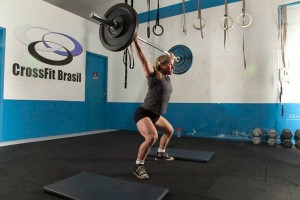
Lifting. When I started training WL, my raw squats increased.
Kettlebells are quite useful, too, especially considering the hip snap and developing hip extension power.
3. Dead-Squats
Some specific exercises are also interesting to improve power:
One of them is squatting from the lowest position: the rack safety bars should be adjusted so that the loaded bar rests at a height close to the lifter’s lowest squat position.
The lifter starts the movement from the squatted position, without the benefit of elastic strength. This really helped me.
4. Improve Stability
Another generality is: improve stability and you will improve the lift.
One of the things that holds both for the squat and the bench press is that the lifter must be familiar with the load itself. You often know when a lift will be missed when the bar is unracked: unstable control of the loaded bar means the eccentric phase is compromised.
If the eccentric phase is compromised, the lift is almost always lost.
So un-racking and racking the bar with higher than 100% loads is something that I found useful.
5. Correct Form
Form is also important for stability. Excessive trunk inclination (“good-morning squat”) indicates a consistent problem with technique that is probably affecting improvement. This must be corrected and we have several exercises that are effective for that purpose: front squats, overhead squats, for example.
6. Training Volume
Finally, it’s important to check if you’re not overtraining or undertraining.
Optimal training load, too, follows the principal of biological individuality.
I’ve seen lifters do well with high and low training frequency, both for the squat and the bench press (rarely for the deadlift, which requires less frequent training sessions in general).
Although intensity undulation along the training mesocycle has to exist, there are some lifters who tolerate higher average intensity than others. Those who do, may not do well under other training regimens (higher volume, less intensity).
7. Other considerations
My training includes at least two specific powerlifting squat sessions per week.
Since I also practice weightlifting, I actually squat almost every day – one way or the other. It may be too much squatting for some, but I do well with this all-round athletic training (and so do many other athletes).
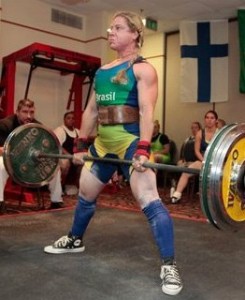
Injuries
Too many to count!
I’ve been a competitive athlete since I was, let’s see… 12 yrs old. I will be 49 yrs old this month. Within the concept of “athletic age”, I’m a pretty old athlete.
In the old days, they gave you a cortisone shot, a few heat applications and put you right back on track (or court, or floor).
When I became a competitive powerlifter, I had accumulated a large number of injuries and interventions. I had already had bilateral knee arthroscopy, my right hand was deficient, major fibrosis in important muscle groups, you name it.
In powerlifting, I had a few overuse injuries, some chronic ones, and a couple of accidents. I had acro-myo-clavicular injury (“weighlifter’s shoulder” or “clavicular osteolysis”), ulnar nerve entrapment and epicondylitis, from the bench press, a couple of iliopsoas sprains, on the deadlift, a broken fibula and anterior cruciate ligament tear, from squatting accidents.
These happened on a slippery floor and on a defective power cage (the bar slipped from the left side support and the weight spun over my left knee), respectively. That last injury was bad and a few months later required surgery.
I forgot a weird one: a 110kg bench press kicked back on my face after lockout and nobody managed to hold the bar. It’s hard to believe, but it just broke my nose and left me feeling a little strange for a few days.
Overcoming Injuries
I overcame all of them like most lifters do: not giving too much attention. I followed more or less my physicians’ advice, as long as it didn’t keep me away from the bar too long. I also followed the physiotherapists’ advice to the letter, again, as long as they didn’t spoil my training too much.
Most of us go to the platform with a few manageable injuries. It’s a sort of unspoken moral code not to talk about it, though. At least not during the meet. You can laugh about how stupid you and your friends are afterwards, but warriors don’t cry during the battle.
Controlling the Emotional State at a Meet
Humm… I get anxious, like most people. I guess the tension rises until my name gets called for the first squat. After that, I’m in the game, I don’t easily lose focus.
Things that I found to be important to control the emotional state during a meet:
- Dramatically reduce interaction as soon as you start to prepare for the competition.
- For me, the moment I break contact is when I start braiding my hair. When you start warming up, talking should be over for some time. Warming up is already competing.
- Keep focus from the first warm up squat to the last competitive deadlift.
- Before each movement, perform the movement mentally.
- Each person does it according to his/her own ritual, but it’s good to prepare for that. Learning to mentally rehearse the lifts allows you to do it while waiting for your name to be called to the platform.
- Never compete either undernourished or digesting heavy food.
- Your blood sugar should be stable for at least nine rounds. It’s 1,5-2h of heavy lifting, so any important fluctuation in blood sugar will affect your emotional and cognitive state.
- Don’t do, take or eat anything you’re not familiar with during a meet.
- If someone tells you it’s really wonderful to be slapped, try it some other time. The competition is no place to try anything new. It will make you insecure.
- First attempts should be under control.
- You must leave the warm up area completely comfortable with your first attempt. Don’t let other lifter’s first attempts influence your decision in this. Missing first attempts is disastrous and most lifters lose emotional control.
- If the environment is hostile, don’t lift there.
- There are dozens of good federations for you to choose from. Go where you feel you and your sport are respected and treated with warmth and solidarity.
EDITORS NOTE: Emma James of IronPysche also has a great article on competition pressure and how to deal with it. click on this link.
A Female in a Man’s World- Powerlifting??
In Brazil, the atmosphere is very sexist and hostile towards women like me. By “like me” I mean a woman not willing to accept arbitrary ruling and male authority.
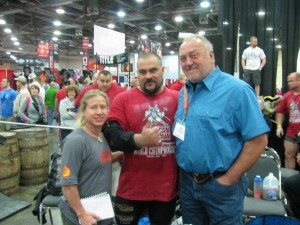
To make things worse, I am not somebody’s wife or girlfriend (not somebody in the sport, in the country), I have more educational background then most Brazilian strength sports leaders and I have been openly hostilized because of that.
My friends and my family support me in everything I do, they are my biggest fans, but they’re also frequently afraid because of the level of violence and hostility. I feel bad for my daughter and my mother, they shouldn’t have to go through this.
But this is Brazil. I have found good friends in powerlifting all over the world. They treat me as an equal, intellectually, and at the same time they respect me as a female.
Actually, I am on the platform now because I was practically rescued by two of them: Leonardo Cavaglia and Mauro Spinardi, from Argentina.
They are exceptional lifters, they are much more experienced than I am, yet they never patronize me or try to impose their views. They tried their best to bring me back, and they succeeded. I miss them, most of the time.
Other non-lifting friends are using my experience to discuss gender issues and issues involving body image and representation – I guess I am giving them a lot of food for thought!
Strength Sports in Brazil?
Actually, all that matters here is soccer. We are celebrating the recent rise of the fights to popularity, but that’s all.
The best organized strength sport in Brazil is arm wrestling. There are hundreds of competitors and we have a number of excellent, world level athletes. We actually have some world champions, such as Wagner Bortolato (four times world champion).
Brazil also had a Pan-American record breaker in a very difficult category in weightlifting, Fernando Reis (over 105kg). He clean and jerked 225kg in Guadalajara, last year.
South American Powerlifting Federations
I didn’t join a federation in Brazil: we created one (the ANF, Aliança Nacional da Força, National Strength Alliance).
We also created a South American one (the ASUPO, Alianza Sudamerica Powerlifting, the South American Powerlifting Alliance).
My reasons for doing this were that I reject the authoritarian and biased procedures of the IPF, on the one hand, and the joke we call “backyard powerlifting”, on the other. I don’t think Brazil has overcome this dilemma. Our federation is minuscule.
At the continental level, however, we made good progress. The AAP (Argentine Powerlifting Alliance) is well and striving, and it brings together the best athletes in the country. Other countries that are making progress are Colombia, Ecuador and Uruguay.
This South American movement is interesting in the management of the present fractioned powerlifting environment. We decided not to align with one specific federation. We have a certain approach that allows us to work with many different federations. As long as they have a well structured and reasonable rule book, transparent procedures, good lifting environment, and high level lifters, we can work with them.
Since we formed the ASUPO, I have lifted with the GPA, which was a wonderful experience, and this year I will lift with the WPC. We believe in exchange, so we are trying to get as many of us certified as international referees as possible and be able to contribute. Nobody wants to be referee because there is lots of work to do. A federation needs everybody to help, though.
Yes, there are many federations in powerlifting. Too many? I am not sure. I am one to be happy that we are not an Olympic sport. Monolithic power structures are disasters waiting to happen. The athlete is the victim.
There can be many rulebooks, environments, equipments, but a kilogram of steel is still a kilogram of steel. If you know in which circumstances that load was lifted, you know whether it was a good or mediocre lift.
There can be many rulebooks, environments, equipments, but a kilogram of steel is still a kilogram of steel
